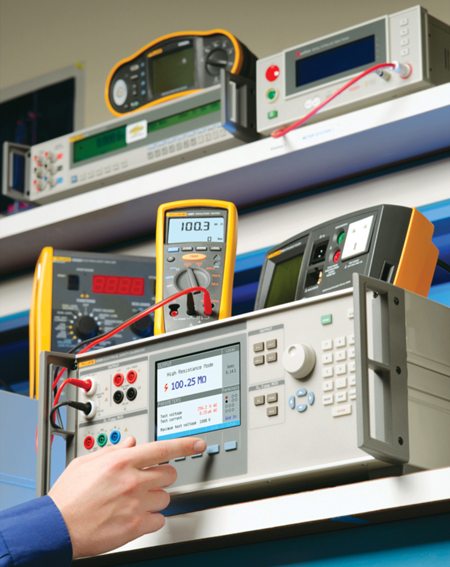Calibration defines the accuracy and quality of your measurement. But just buying a certified, calibrated equipment is not the answer; you need to service and maintain the calibration of your equipment throughout its lifetime for reliable, accurate and repeatable measurements
SHWETA DHADIWAL BAID

NOVEMBER 2010: Calibration defines the quality and accuracy of your measurement. It is the process of parameter verification of any equipment against a known standard so that the quantities around the world show similar results. “Accurate measurements play a vital role at each stage in development and manufacturing of a quality product for consistent and reliable performance,” says Anirudha Kela, managing director, Scientific Mes Techniq. A reliable and accurate result brings confidence in you as well as in your product.
The goal of calibration is to minimise the measurement uncertainty by ensuring the accuracy of your test equipment. S.M. Sulfikaruddin, vice president, support solutions unit, EMC, Agilent Technologies, says, “All the measurement processes are accompanied by errors and uncertainties, and they cannot be eliminated. Calibration quantifies and controls the errors or uncertainties of the measurement processes to an acceptable level.”
Repeatability is a great virtue of equipment even ahead of accuracy, which can be defined only by quantification.
“In measuring, we quantify a thing, which firms up our knowledge, while qualifying a thing is never precise, like something is very good, too small or very big. When we say the voltage is 1.203V, it is precise, and it is neither less than 1.202V, nor more than 1.204V. The moment an equipment is calibrated by a standard that is the best earmarked, accuracy hierarchy is set up, irrespective of its origin, cost and newness. We therefore say we pass on the accuracy of a million-rupee meter to this thousand-rupee meter with one stroke of calibration that may cost just a few hundred rupees,” explains S. Desai, managing director, Kalashri Electronics.
There are accreditation bodies around the world that have been evaluated by peers as competent to enhance the acceptance of products and services across national borders. This is to create an international framework to support international trade through the removal of technical barriers.
“The momentum is huge amongst world’s leading test agencies regarding calibration. Everyone is demanding ISO/IEC 17025 accreditation including measurement uncertainty data,” shares David Bisenius, an entrepreneur and internationally recognised regulatory expert in product safety.
Calibration is not a one-time thing. It’s a repeatable process to maintain the accuracies. The interval for re-calibrating your equipment is influenced by a lot of factors including the type, usage and environmental factors.
Traceability in calibration
Calibration is an unbroken chain of comparisons with national and international superior equipment. There are about 123+ countries bound to ISO 9000 international standards to get their equipment calibrated in such a way that they maintain the same quality standards.
“Calibration should be traceable to national standard with unbroken chain of traceability, i.e., the equipment which is used as master should be calibrated with better accuracy master until the traceability reaches to National Physical Laboratory (NPL) or international standards,” explains Desai.
In India, the highest levels of standards are maintained by NPL. “NPL gets their equipment calibrated from National Institute of Standards and Technology (NIST), Washington,” shares Desai.
There are four Electronic Regional Test Laboratories (ERTLs) and government labs like Electronics Test & Development Centre (ETDC) and Centres for Electronics Test Engineering (CETE) that get their equipment calibrated from NPL and provide calibration services to others. Apart from this, there are private labs, either owned by the original equipment manufacturers (OEMs) or some third party, which provide calibration services and are accredited by National Accreditation Board for Testing and Calibration Laboratories (NABL). NABL provides laboratory accreditation as formal recognition of technical competence, while ISO certification is on quality system management. Thus most of test and measurement equipment manufacturers maintain their NABL-accredited calibration laboratory.
The hierarchy followed in calibrating one equipment from the master—which, in turn, is calibrated from higher levels of accuracies and standards—is maintained around the world. “You must test your equipment by a master that is at least a factor of four better than the equipment being calibrated,” suggests Sulfikaruddin. If you are consulting a private laboratory, you must first ask for traceability of their standards and compare it with your equipment’s accuracy. “Without traceability, the calibration accuracy may be questionable,” comments Bisenius.









